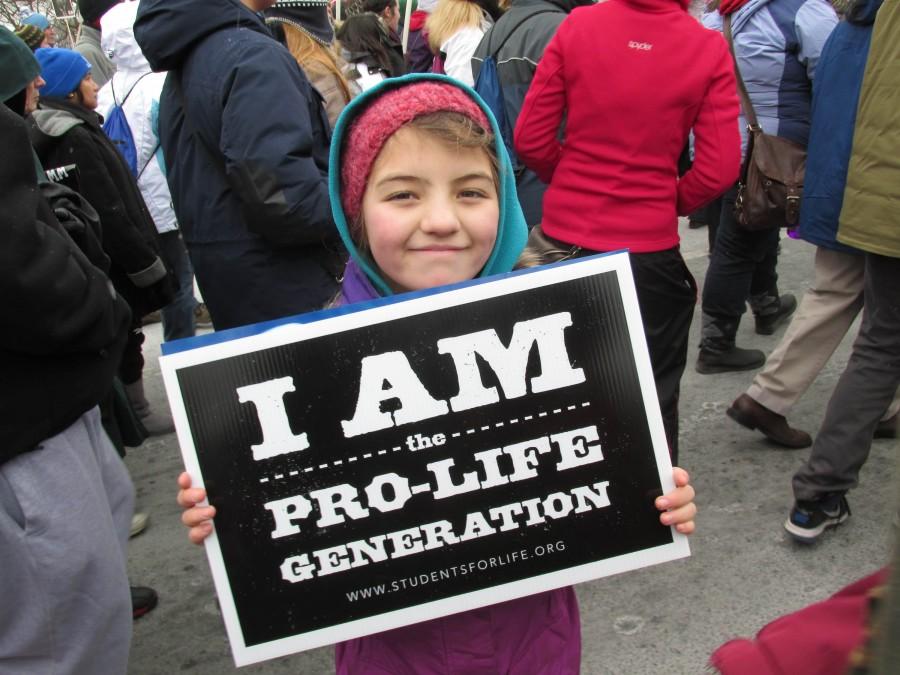Abortion Debate: A Matter of Life or Choice
The Supreme Court case Roe vs. Wade in 1973 was a significant moment in the debate regarding a woman’s right to an abortion. In this case, the Supreme Court ruled in a 7-2 decision that a woman’s right to an abortion fell within the right to privacy granted in the Fourteenth Amendment. This decision gave women complete autonomy over pregnancy during the first trimester, and defined different levels of state interest for the second and third trimester. Due to this case, 26 out of 50 states’ abortion laws had to be altered.
Despite this ruling, the pro-life vs. pro-choice debate is still heavily sensitive and controversial. The official definition of an abortion is the “deliberate termination of a human pregnancy, most often performed during the first 28 weeks of pregnancy.” Someone who is pro-life advocates the legal protection of human embryos and fetuses, especially by favoring the outlawing of abortion on the grounds that it is taking a human life. Conversely, someone who is pro-choice favors keeping abortion as an option for unwanted pregnancy.
“I believe that policies around abortion should be based on our best scientific evidence,” researcher of obstetrics, gynecology and reproductive science Dr. Gretchen Sisson said. “Accordingly, this evidence shows that legal and accessible abortion is required to ensure safe abortion is available for all women.”
Every year in the United States, over 1.1 million abortions take place. Approximately 33 percent of all women will get an abortion at some point in their lives. Additional research also shows that over 95 percent of women who get abortions do not regret their decision years later.
“[Abortion] is an extremely common procedure,” Dr. Sisson said. “Making abortion illegal or inaccessible will not stop women from getting abortions; it will just mean that their abortions are more dangerous.”
According to the National Abortion Federation, up until 1973, abortion was illegal in most of the United States. Due to this, many women died or suffered from serious medical issues as a result of being unable to obtain a medically safe abortion. Women in desperation often made dangerous attempts to induce their own abortions, or resorted to untrained practitioners who performed abortions with unsafe instruments and in unsanitary conditions. Following these unsafe abortions, women would rush into the emergency room with serious medical complications, such as perforations of the uterus, retained placentas, severe bleeding, cervical wounds, rampant infections, poisoning, shock, and gangrene.
“I believe the strongest argument in favor of the ‘pro-choice’ position in support of legal abortion is simply that women’s lives, health, and well-being depend upon access to comprehensive reproductive healthcare,” Dr. Sisson said. “This includes abortion. It always has. It always will. I don’t believe any of the major arguments in support of the anti-abortion movement are based on the best medical, psychological, sociological, economic, or public health research, and so I do not find any of them compelling.”
Research proves that legal abortion has clearly been a significant factor in saving women’s lives and health. Deaths due to abortion have declined dramatically in all countries where abortion has been legalized. The risk of death from having an abortion has also declined dramatically, and is now miniscule. When an abortion is legal and readily available, women tend to have them done early in their pregnancies, when health risks are the lowest.
“Women are capable of making the best decisions for themselves and their futures, and should be allowed to do so,” Dr. Sisson said.
On the other side, many pro-lifers argue that it is immoral to terminate a developing child. Research shows that the human body begins to develop as early as three weeks in the womb. The cardiovascular system is the first major body system to develop and function. At about 22 days after conception, the child’s heart begins to circulate its own blood, and its heartbeat can be detected on an ultrasound. At just six weeks, the child’s eyes and eyelids, nose, mouth, and tongue have formed. Electrical brain activity can be detected at six or seven weeks, and by the end of the eighth week, the fetus has now developed all of its organs and bodily structures. By ten weeks after conception, the child can make its own bodily movements.
“Public funding of abortion providers is an insult to people of conscience at the least and an affront to good governance at best,” leading Republican candidate Donald Trump said.
Many people who are pro-choice argue that it is simply cruel to force a woman to carry a pregnancy which was the result of rape. However, in response, pro-lifers relate abortion to the death penalty. The Supreme Court has declared the death penalty to rapists a form of cruel and unusual punishment. Similarly, pro-lifers believe that a child conceived in rape should not have to die for a crime they did not commit. Studies show rape victims choose abortion at half the rate of the average unplanned pregnancy, which is over 50 percent. Only 15-25 percent of rape victims choose abortion.
“I understand the utilization of abortion in cases such as extreme health issues of the mother or even rape. However, in any other case I find it unnecessary and ignorant. There are many consequences of sex that you must consider before taking the risk, including pregnancy,” sophomore Jillian Gehring said. “I find it hard to believe that people can not understand that pregnancy could be an outcome every time they have sex. Don’t they know how reproduction works? They need to consider these things before they conceive a child, not after! It is unacceptable that someone would consider ending a potential life because it is an inconvenience to them. It is simply not their life to take.”
Forty-one states have enacted abortion restrictions at different stages of pregnancy. North Dakota bans abortion as early as six weeks, when a fetal heartbeat can be first detected using a transvaginal probe, and Arkansas bans abortion at 12 weeks, when a fetal heartbeat can be detected by using an abdominal ultrasound. Furthermore, eight states ban abortions at 22 weeks, based on the theory that the fetus can feel pain at that point, 26 states prohibit abortion at 24 to 26 weeks, when a fetus is deemed viable outside the womb, and nine states and the District of Columbia have no specific laws prohibiting abortion after a certain point in pregnancy.

Senior Izza Choudhry is a four-year staff reporter and former one-year copy editor and one-year news editor, now serving as opinion editor for the Spotlight....


